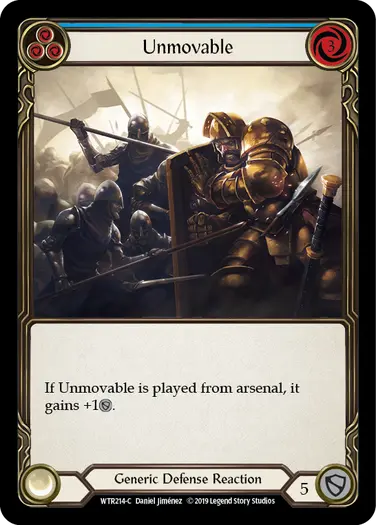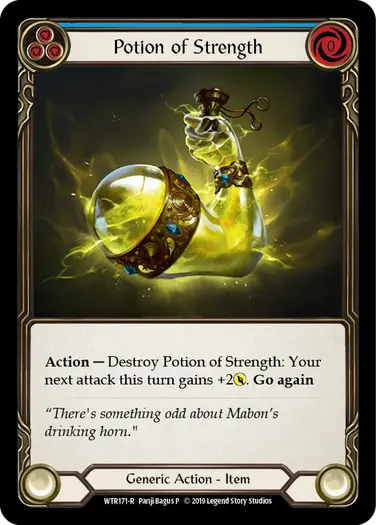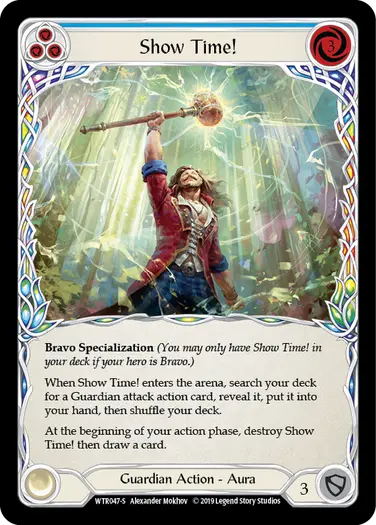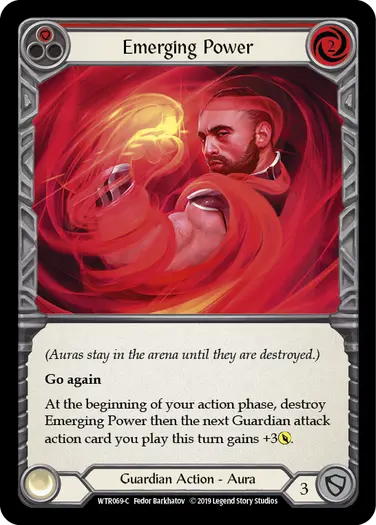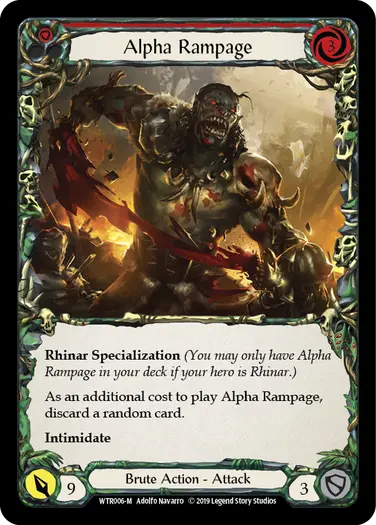Whether it’s a fan favorite or a common enemy, control decks exist in all types of card games in one form or another. Control decks are often defined as defensive decks that prolong the game, while collecting resources that allow them to dominate the game at a later stage. It does not matter how they get to this stage of the game, or what they use to eventually end the game; the premise is to control the board, and ultimately win the game.
Threat Neutralization
The most important thing to keep in mind when creating a control deck is that you want to capitalize on the later stages of a game – that involves figuring out how to survive until that point. In a game of Flesh and Blood, your opponent will have a full grip and roughly the same amount of cards, resources and power as you each turn, so you have to be ready to mitigate as much of this as you can.
Let’s look at different forms of threat neutralization in Flesh and Blood.
Defending – Using cards to defend the attack is the most intuitive way to not take damage. Furthermore, playing powerful defense reactions not only allow you to block more damage, but can also play around trickier tactics such as dominate or reprise.
Forcing cards out of their hand – A good offense is a good defense. Ensuring that you are always attacking will put your opponent in a precarious position as they either have to lose a card or two every turn which would greatly hinder their attacks or lose precious life total.
Breaking apart the synergies – Pinpointing what your opponent is trying to do and then working in ways to negate that is crucial. For example, if your opponent is trying to dominate you every turn, ensure there is always a defense reaction ready in your arsenal. Or if your Ninja opponent is trying to trigger on-hit effects, then you can block those attacks more aggressively.
Card Advantage
The most common resource that control decks excel in are cards. This is often referred to as card advantage, this could be by drawing more cards or using less cards to answer more cards that your opponent used. However in Flesh and Blood, players draw back up to their hero’s hand size at the end of turn, so you might be thinking, control doesn’t exist.
So let's look at what variables stay after a turn of Flesh of Blood
- Life
- Deck size
- Arsenal
- Items
- Auras
Life – Unlike other games where you can use your life as a resource to build up your board, it’s quite important to take care of your life as a resource. Think of each turn cycle (your turn plus your opponent’s turn) as an individual mini-game where the goal is to come out ahead and deal more damage than your opponent did to you. This means it’s not about doing massive points of damage. If you can block most or all of your opponent’s attack and still get in a cheeky point of damage or two from your weapon, I would call that a successful turn cycle.
Deck size – Both players usually deplete their deck size at a similar rate due to both players drawing up to intellect every turn, however this is not always true. Attacking and blocking are the main ways to deplete cards in your deck. Pitching cards allow those cards to go back to the bottom of your deck. Some decks are better at keeping a high deck size than others. Imagine pitching multiple cards to play one single attack and your opponent blocks with two cards. You have just gained an advantage in deck size; but size is not all that matters. It’s important to realize that the quality of cards you pitch into your deck matters too, and what you pitch in early turns might make all the difference.
Arsenal – Since players draw up to their intellect each turn, its advised you use every card each turn so you don’t lose out on this value. This would essentially mean each of your hands will be a random four new cards, however the arsenal is a great place to store up a card to ensure you have a better idea of what you are doing the following turn.
Items / Auras – Items and Auras stay in play until they are destroyed. This lets you have a more powerful turn at the expense of getting the card into play a previous turn. Often getting one of these cards into play involve having an action point and sometimes resources. As a control deck that may be defending a lot, you end up with only one or two cards left in your hand and it’s sometimes better to deploy an item than perform a weak attack.
Winning the game
Gradually – As mentioned earlier, it’s not about doing massive points of damage, it's about doing more damage than you are taking. Spending only one or two cards to attack with your weapon is absolutely fine, so long as you aren’t taking a massive attack. If every turn you are doing a bit of damage while taking less, you will gradually win the game.
Big Attacks – Instead of focusing on doing attacks every turn, you can accumulate resources to do big attacks on your opponent. Waiting until you have multiple items and auras in play, as well as having an arsenal ready before striking, is a great recipe to doing massive amounts of damage. Just make sure you aren’t taking more damage when you decide not to block the previous turn!
Fatigue – We mentioned using deck size as a resource, and this could be used in two different ways. You could focus on lowering the quantity of your opponent’s deck by generally pitching more often, thus resulting in less of your cards going into the graveyard than your opponent; or you could focus more on quality. By pitching higher-quality cards then using your less important cards to defend their key cards, you could take control of the game later when your average draws become more powerful than your opponents, just make sure you have a good game plan to get there and not die beforehand!
It is important to remember that you don’t lose the game when you run out of cards in Flesh and Blood. This means if you are unable to draw fully up to hand size, you’ll simply draw as much as you can and continue the game. Now you would be severely disadvantaged at this stage, but if both players are at this state it becomes a matter of last man standing.
Remember, if you have one card left and your opponent has zero, you can pitch to attack with your weapon, then during the end of turn phase, you would put the pitched card to the bottom of your deck and redraw it ready for a repeat turn.
Overall, control decks are an important part of Flesh and Blood, and although it can be built in a variety of different ways, the principle will always be the same. Survive, control the threats, then win the game.

